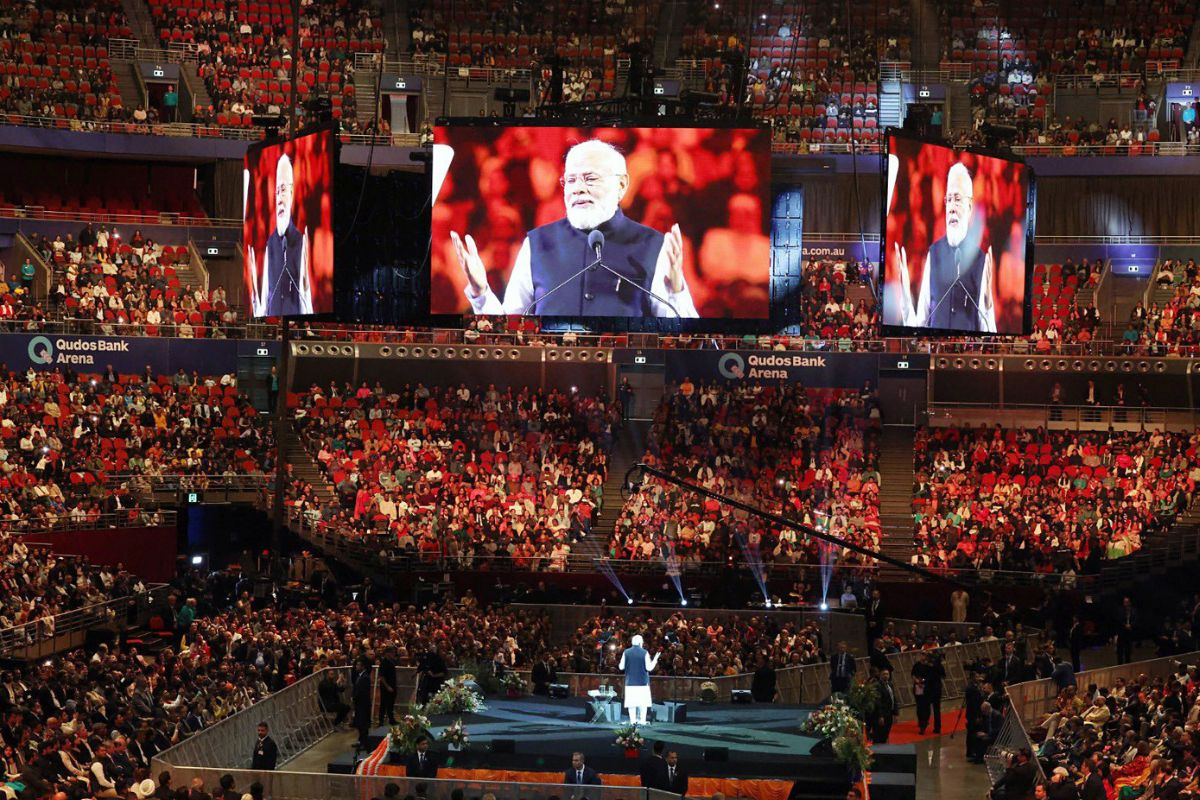Prime Minister Narendra Modi had been wooing the Indian diaspora even as chief minister of Gujarat. Consciously he made all efforts to endear himself to people of Indian origin people settled abroad, whether in America, Great Britain or Australia. The recently concluded visit to the United States was a critical moment for Modi’s international reputation. The visit displayed the increasing significance of growing Indo-U.S. ties. Modi was pleased to receive top honors from Washington.
This included a state dinner at the White House, prestigious accommodations at Blair House, and an opportunity to address the U.S. Congress for the second time in nine years. Modi as chief minister of Gujarat, was denied a U.S. visa in 2005 for alleged human rights violations. But the U.S. has embraced him progressively as Prime Minister, and now more than ever.
Advertisement
The culturally rich, highly educated, and wealthy Indian diaspora is a link between the largest and the oldest democracies of the world. This relationship has moved from Prime Minister Nehru’s non-interference outlook to the diaspora’s engagement during the regimes of Atal Behari Vajpayee and Modi. The four-million-strong community’s political weight has not been lost on Biden or Modi. It is the second-largest and fastest-growing community. They are key voters in several swing states.
According to American media, 74 per cent of Indian American voters backed Biden in 2020. Modi’s visit was not solely meant to improve bilateral relations but also to cement his bonds with the Indian diaspora and business leaders. He made it a point to complement the diaspora in all his speeches, including his address to the U.S. Congress.
Modi projected India as a growing global power, instilled a sense of pride in them, and used it to build his constituency back home. Indian Americans, on their part, turned out in large numbers at events during the PM’s visit. When he landed in New York, he was greeted with chants of ‘Modi Modi’, ‘Bharat Mata ki Jai’ and ‘Vande Mataram.’ They cheered him at the South Lawn of the White House, where President Biden and First Lady Jill Biden gave the Prime Minister a grand welcome. “I have come here many times, but today for the first time, the doors of the White House have been opened for the Indian American community in such large numbers,” Modi said in his reply. He called the Indian diaspora “the real strength” of the U.S.-India relationship.
In applauding the diaspora, Modi told the community that they are brilliant in every field, not just Spelling Bee, and have played a significant role in the country’s relationship with America. Why does the diaspora admire Modi? Over the decades, the BJP has built up a carefully committed diaspora. “The Friends of BJP” is an influential organisation in America. Late BJP Prime Minister Vajpayee started the Pravasi Divas and honoured Indian-Americans. He even appointed an NRI, B K Agnihotri as a roving ambassador. However, the U.S. government refused to recognize a second envoy.
Modi announced many facilities, like a more accessible visa regime and an Overseas Indian card. The diaspora wants voting rights, but this will take a long time. Modi impressed Americans soon after he took over with his memorable event in Madison Square Garden, New York, in 2014. Some American lawmakers addressed the Indian diaspora alongside Modi. Then came the Howdy Modi rally in Houston, which stunned President Donald Trump. Secondly, after the liberalization in the nineties, India’s economy is becoming the third-largest in the world. It offers an attractive market. As Prime Minister, Modi has interacted with three Presidents in the past nine years – Barack Obama, Trump and now Biden.
They had all appointed many members of the diaspora in their administrations. Biden has appointed 130 Indian Americans in many key positions. Prominent figures like Vice President Kamala Harris and presidential hopeful Nikky Haley have shattered barriers. Business leaders from the diaspora are heading over two dozen American companies, including Google chief Sundar Pichai and Microsoft’s Satya Nadella. Thirdly, and more importantly, the U.S. wants to prop up India as a counter-balance to China.
The business and defence ties with the U.S. have increased tremendously in the past decade. It includes commerce, diplomacy, defence and related areas. India has joined Quad, G 20, and many other international groupings. The visit also had some embarrassing moments. The Indian diaspora is not monolithic but a diverse community. The supporting and opposing camps assembled in Washington to cheer Modi or protest against him. On 20 June, 75 U.S. Senators and Members of Congress wrote a letter to President Biden to address issues including “shrinking of political space, the rise of religious intolerance, and more” in India. Taking them in his stride, Modi said he was “concluding a very special USA visit, where I got to participate in numerous programmes and interactions to add momentum to the India-USA friendship.” Both sides acclaim the visit as significant.











